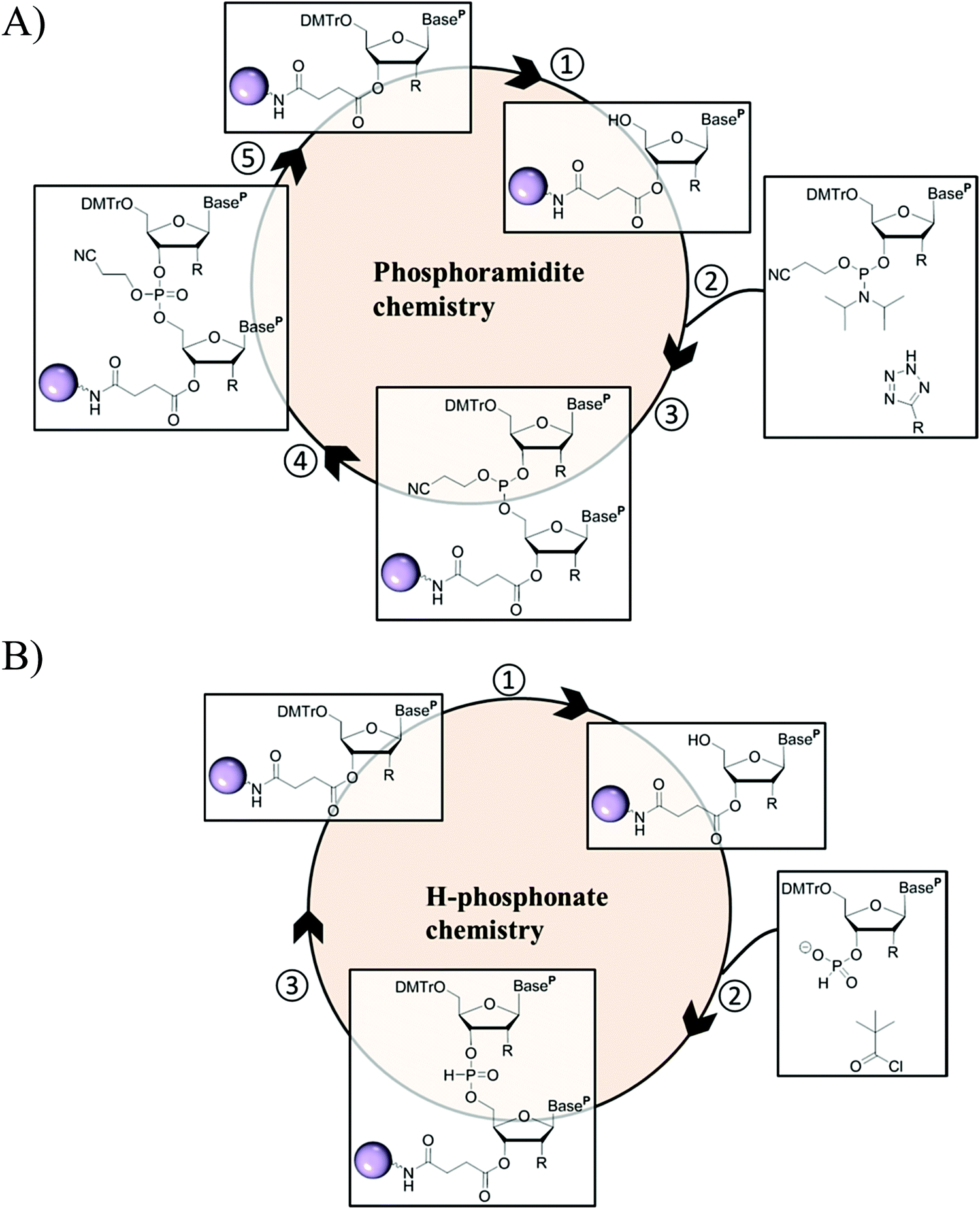Nucleic Acid are polymers and are called as either DNA or RNA. Out of which, DNA is the one which helps in passing on information to all things happening inside body of a living organism. A nucleic acid is a polymer of smaller molecules called nucleotides. Nucleic acids were discovered in 1868...Nucleic acids were discovered in 1868, when twenty-four-year-old Swiss physician Friedrich Miescher isolated a ne mpound from the nuclei of white blood cells.Nucleic acids were discovered in 1868 by Friedrich Miescher, who called the material 'nuclein' He was the first to identify DNA as a distinct molecule. Phoebus Levene was an organic chemist in the There are two types of nucleic acid and they are DNA and RNA. DNA is the basic instructions for...Nucleic acid was first discovered in the 1860's by a then young Swiss scientist called Friedrich Miescher. He was working on white blood cells and discovered a new compound that was different from the already known biomolecules i.e. carbohydrates, proteins, and lipids etc.The nucleic acid was first discovered by Johan Friedreich Meischer,he was a Swiss biologist. No, a nucleic acid is a nucleic acid. Nucleic acids are a class of macromolecules of their own.
Who first identified nucleic acids and where were they discovered?
Who discovered DNA? (Image credit: Universal History Archive/Universal Images Group via Getty Images). DNA was first observed by Swiss Watson, Crick and Wilkins were awarded the Nobel Prize in medicine in 1962 "for their discoveries concerning the molecular structure of nucleic acids and its...Friedrich Miescher discovered nucleic acids in blood cells. Nuclein was discovered by Friedrich Miescher in 1869. Explanation. In the somewhat early 1880s Albert Kossel further purified the substance and discovered its highly acidic properties.The world is currently battling against an infodemic of propaganda spewing from the corporate media and official health Who exactly is Schwab speaking to when he speaks of a more prosperous future? I could have said, "Identifying dots is called 'analysis'. Connecting them is called 'synthesis'.Deoxyribonucleic acid is a molecule composed of two polynucleotide chains that coil around each other to form a double helix carrying genetic instructions for the development, functioning...
Who first discovered the nucleic acids? | AnswersDrive
Contrary to popular belief, Darwin was not the first to propose that species evolve. Instead, Darwin's key contribution was to outline a mechanism for evolution: natural selection. Only the fittest, meaning those who are best suited to their environment, will succeed in reproducing, and so their beneficial...Chemistry of nucleic acid was discovered by Albrecht Kossel while the term 'nucleic acid' was He identified and named Adenine, Cytosine, Guanine, thymine and Uracil: five basic components of nucleic acid. DNA is deoxyribonucleic acid. It was first isolated by Friedrich Miescher from pus...Answer: Frederick Miescher first identified nucleic acids .and they discovered from DNA. good morning all have a wonderful day please don't report my questions i am new here my introname tanmay shah std 10th from Gujarat here because of my … first following.Nucleic acids are molecules that allow organisms to transfer genetic information from one generation to the next. Nucleic acids include DNA and RNA. These molecules are composed of long strands of nucleotides. Nucleotides are composed of a nitrogenous base, a five-carbon sugar, and a phosphate...Who first identified nucleic acids, and where were they discovered? A. Friedrich Meischer discovered nucleic acids in blood cells. Who discovered the monomers of nucleic acids? A. Phoebus Levene B. James Watson, Francis Crick, and Rosalind Franklin C. Friedrich Miescher D...
Friedrich Miescher
Keeping this in consideration, where do nucleic acids come from?
Deoxyribonucleic acid (DNA) and ribonucleic acid (RNA) are made up of nucleic acids discovered within the nuclei of dwelling cells. They are the automobiles of genetic inheritance.
Why is it referred to as deoxyribonucleic acid?
As , the letters in DNA stand for "Deoxyribonucleic Acid." DNA is a polymer made up of monomers called nucleic acids, which can be related together in long chains. Each nucleic acid monomer is made up of a sugar (deoxyribose in DNA), a nitrogenous base, and a phosphate group.
What is a nucleic acid fabricated from?
There are five easy parts of nucleic acids. All nucleic acids are made up of the same development blocks (monomers). Chemists name the monomers "nucleotides." The 5 items are uracil, cytosine, thymine, adenine, and guanine.
Origins, Structures, And Functions Of Circulating DNA In Oncology | SpringerLink

Nucleic Acids As Antigens'
Nucleic Acid-Based Technologies Targeting Coronaviruses - ScienceDirect

Volume 17 Number 9 1989 Nucleic Acids Research ABSTRACT We Have Discovered A New Restriction Endonuclease, Mfel. In Nuclear Extr
May See New Life
Disordered RNA Chaperones Can Enhance Nucleic Acid Folding Via Local Charge Screening | Nature Communications

Large Scale Analysis Of The Mutational Landscape In HT-SELEX Improves Aptamer Discovery
The Discovery Of Triple-Stranded Nucleic Acids
Thirty-five Years Of Research Into Ribozymes And Nucleic Acid Catalysis: Where Do We Stand Today? - Abstract - Europe PMC

Subgroup Level Differences Of Physiological Activities In Marine Lokiarchaeota | The ISME Journal

AcrFinder: Genome Mining Anti-CRISPR Operons In Prokaryotes And Their Viruses
NS-065/NCNP-01: An Antisense Oligonucleotide For Potential Treatment Of Exon 53 Skipping In Duchenne Muscular Dystrophy
Mg -dependent Conformational Changes And Product Release During DNA-catalyzed RNA Ligation Monitored By Bimane Fluorescence
Modified Nucleic Acids: Replication, Evolution, And Next-generation Therapeutics | BMC Biology | Full Text

Direct RNA Sequencing On Nanopore Arrays Redefines The Transcriptional Complexity Of A Viral Pathogen | Nature Communications

An Interpretable Prediction Model For Identifying N7-Methylguanosine Sites Based On XGBoost And SHAP
Viruses With Different Genome Types Adopt A Similar Strategy To Pack Nucleic Acids Based On Positively Charged Protein Domains | Scientific Reports

Nucleic Acids As Genetic Material - Judd - - Major Reference Works - Wiley Online Library

Recent Progress In Non-native Nucleic Acid Modifications - Chemical Society Reviews (RSC Publishing)

Genetic Code - Wikipedia

0 comments:
Post a Comment